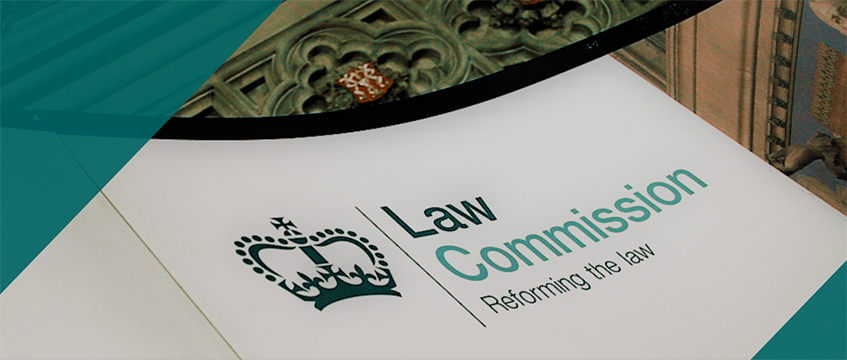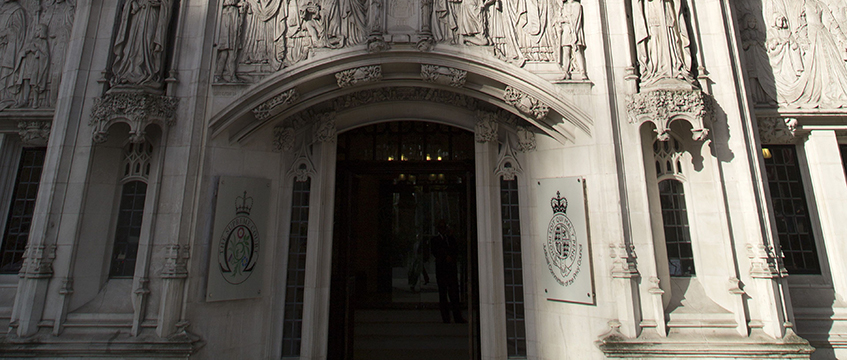Surveyors responsible for national portfolios, or working on a cross-border basis, need to understand both English and Scottish landlord and tenant systems. Here we examine the basic differences
Scotland has few statutes governing leases of commercial property and is unaffected by any Landlord and Tenant Act legislation that applies in England and Wales. The relationship between the parties is therefore governed mainly by contract/lease terms. Leases are similar in the two countries, drawing on English case law in areas such as rent reviews, where the processes are virtually identical. (For an introduction to English landlord and tenant law and practice, see Mainly for Students, 20 October 2001, p128.)
Lease expiry/renewal
Under the English system, at the end of their lease, commercial property tenants have security of tenure under the Landlord and Tenant Act 1954. This means that they have the right to a new lease/tenancy, unless the landlord can establish a ground for possession, as prescribed by the 1954 Act, such as the intention to redevelop the property.
Leases in England may be “contracted out” of the 1954 Act, denying the tenant the right to a new lease at lease expiry. This can place the tenant at some risk, owing to the landlord’s negotiating strength when determining the terms of a new lease. This includes the ability to require the tenant to vacate.
In Scotland, commercial property tenants are in the same position, as there is no security of tenure. Here, the lease is brought to an end by either the landlord serving a “notice to quit” or “notice of removing”, or a tenant serving a “notice of removal”. This usually needs to be at least 40 days prior to lease expiry, as prescribed by statute (Sheriff Courts (Scotland) Act 1907), but the parties may have negotiated a longer period, as contained in the lease.
The Scottish system has two exceptions to its security of tenure rule:
” Tacit relocation – This provides that where neither of the parties serve notice to end the lease, it either continues for a further year from the expiry date if the lease was for a term of one year or more; or, if the term of the lease was less than one year, it continues for the same duration as the term of the expired lease.
The “continuation lease” carries the same terms as the expired lease and is extended similarly if neither of the parties serve notice. This is similar to “statutory continuation” under section 24 of the 1954 Act in England, where the lease continues on the same terms until either the landlord or the tenant serves notice bringing the lease to an end by a section 25, 26 or 27 notice.
” Shops – A retail tenant, on receiving a landlord’s notice of removing, can apply within 21 days to a Sheriff Court for a renewal. The Sheriff can grant an extension of up to one year on terms that they consider reasonable. But this procedure is rarely used.
The lack of security of tenure in Scotland means that tenants in particular need to plan ahead well in advance of lease expiry, seeking to negotiate new terms and/or identify options for relocation.
Compensation for both disturbance and improvements is not available in Scotland unless there is express provision in the lease, which is unusual.
The ease of removing a tenant also simplifies development strategies, whereas in England the landlord may have to establish to a court a ground for possession, as well as having to deal with tenants seeking to gain the maximum from their rights.
Alienation
In England, “privity of contract” means that for leases granted before 1 January 1996, in the event of default of assignees the original tenant becomes liable for the payment of rent and performance of covenants for the duration of the lease, irrespective of the number of times, and to whom, the lease may be assigned.
For leases granted after 1 January 1996, in accordance with the Landlord and Tenant (Covenants) Act 1995, the tenant ceases to be liable following assignment, but leases will typically impose an authorised guarantee agreement, which makes the tenant liable for the performance of covenants by his assignee.
On assignment in Scotland – which is known as “assignation” – the outgoing tenant ceases to be liable. Landlords of Scottish property therefore ensure that suitably protective alienation provisions are drafted – typically on the lines of the assignee having to be respectable, responsible, of sound financial standing and demonstrably capable of performing the tenant’s obligations under the lease.
Especially for larger properties and higher rents, and in the case of anchor tenants, there may be specific conditions relating to financial strength, such as credit rating, turnover and/or profitability. This is similar to pre-assignment conditions, which have existed in England since the 1995 Act.
If a landlord of a Scottish property does not consider an assignee to be of the requisite financial standing, he may seek a substantial deposit against rent and other default, or alternatively a guarantee from a parent company or other substantial covenant.
Some Scottish leases provide that the assignor will be jointly and severally liable with future assignees. This is worse than the English concept of privity of contract, as it binds every tenant in the chain, not just the original tenant. The effect on rental value of such onerous provisions, plus the strong resistance of tenants to it, means that in practice its use is limited.
Sub-leases in Scotland automatically end when the headlease expires, or is forfeited. The risks to a sub-tenant are therefore greater in Scotland, compared with England, where the sub-tenant may gain relief against forfeiture and become the direct tenant of the landlord.
Sub-tenants can seek a separate agreement from the landlord, providing that on the ending of the headlease in mid term, they can continue the sub-lease as a direct relationship with the landlord.
In the event of disagreement between landlord and tenant on the suitability of an assignee or sub-tenant, the matter is resolved by the court – or an arbiter, if this is provided in the lease. This is in accordance with such tests as specified in the lease, as there is no equivalent to England’s Landlord and Tenant Act 1988.
A tenant of Scottish property wishing to claim damages for a deal lost has the task of proving that its landlord has unreasonably withheld or delayed consent. Some recent cases have seen Scottish law move slightly closer to the English position by indicating that the landlord cannot refuse consent to acquire a commercial benefit to itself, and that consent should be given unless the tenant is unsuitable either in its ability topay the rent or to carry out other lease obligations.
|
Dilapidations/repair |
|
Scottish provisions for damages are based on case law |
|
Scottish common law obliges a landlord to maintain the property so that it is windproof and watertight and to a standard reasonably fit for the purpose for which it is let. Landlords almost always ensure that leases provide alternative provisions to obtain the most appropriate balance between the landlord’s and tenant’s responsibilities, having regard to investment value and management issues, as in England. Service charge positions are the same in the two countries. Scotland has no statutory equivalent law to sections 18 (1) and (2) of the Landlord and Tenant Act 1927, which limit damages for disrepair to the lower of the cost of undertaking the works, or the diminution in the value of the landlord’s reversionary interest resulting from the disrepair. The position is instead covered by case law. Scottish courts are inclined to accept the ascertainable cost of carrying out the repair works as the appropriate measure of damages due to the landlord, unless the tenant can prove that the true loss is less. Where, for example, the landlord intends to dispose of the property for redevelopment and it is to be demolished, damages may be minimal. This gives a similar result to section 18 of the Landlord and Tenant Act 1927. |
|
Other differences |
|
Scottish law is similar to English law with regard to rent reviews but differs in terms of titles and contracts |
|
” Freehold in Scotland is known a “feuhold” or “heritable title”. ” The law governing title and contracts is very different in Scotland. Contracts could be created verbally – if this can be proved – and also by assembling a trail of correspondence – although a lease for more than one year must be in writing. Scotland is undergoing reform to its land tenure system. ” Leases of commercial property entered into after 9 June 2000 cannot be of a term greater than 175 years. Exceptions include leases where contracts were concluded prior to the above date and sub-leases where the existing headlease has an unexpired term in excess of 175 years. Some long leasehold investment structures can be affected by this, but it is worth noting that long leasehold interests are much less common in Scotland than in England. ” Most Scottish residential properties are held as feuhold, with few being held on long leases of 99 years or more. New residential leases cannot be granted for a term of more than 20 years. ” As mentioned, for rent review, the English and Scottish systems are similar. But in the case of arbitration, different law applies. ” In Scotland, there is no implied provision that consent is not to be unreasonably withheld, as in the case of alienation in England, nor is there a prohibition of a fine or premium being secured in the case of a change of use. Leases in Scotland must include the term “reasonable” and tend to go further than that to set the criteria for consent in the relevant circumstances. ” “Keep-open” clauses – also called “continuous trading” clauses in Scotland – are still enforceable in Scotland. In England, damages are more likely to be awarded to a landlord if a tenant ceases to trade, but in Scotland, “specific implement”, known in England as “specific performance”, is the primary remedy. Damages can be awarded as an alternative if the keep-open obligation is no longer capable of performance, or where it would be unjust to enforce it. ” Scotland uses only the terms “landlord” and “tenant”, and not “lessor” and “lessee”. ” “Covenants” or “obligations” in England are simply known as obligations in Scotland. ” The modern Scottish quarter days for rent collection are 28 February, 28 May, 28 August, and 28 November. These were changed from the historic Scottish quarter days of 2 February, 15 May, 1 August and 11 November. In contrast, the traditional English quarter days are 25 March, 24 June, 29 September and 25 December – although modern quarter days of 1 January, 1 April, 1 July and 1 October are now more frequently used in England. ” Different rules apply to forfeiture, known in Scotland as “irritancy”, and to distraint, known as “diligence”. Irritancy is one area affected by statute: the Law Reform (Miscellaneous Provisions) (Scotland) Act 1985. ” If a Scottish property is destroyed or sustains minor damage, the law of frustration terminates the lease automatically. However, in institutional leases this common law provision is always overridden by express provision to the contrary. ” Most of the environmental law applying to England also applies to Scotland. Planning law is also similar, although legislation is separate. The rating system is very different. |










